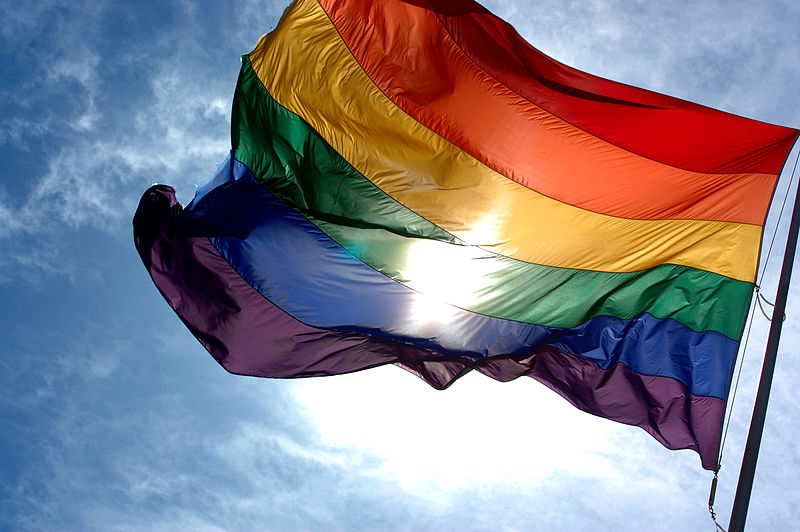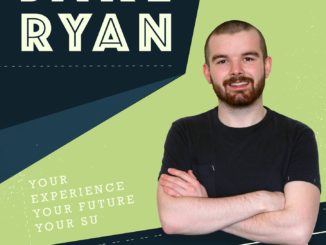
Policemen. Firemen. Military. Dancers, actors, singers. Male and female. Young and old. People from all backgrounds and walks of life marched in America’s biggest St Patrick’s Day parades, except the people that count for about 10 million of America’s total population.
A ban on pro-gay expression within these parades, particularly in New York and Boston, has been causing controversy for years. It’s seen as a way of preventing certain people from celebrating their culture and heritage, and defining them by their sexual orientation.
The controversy appears to be up for debate again in 2014, following New York Mayor Bill de Blasio’s decision to boycott this year’s parade in opposition to the anti-gay stance making him the first mayor to do so in 21 years.
Caoimhe Foley of DCU Lesbian, Gay, Bisexual, Transgender, and Ally (LGBTA) Society explained that people feel the parade’s rules tell them they can’t be gay and Irish. She said: “You can be one; you can have your Gay Pride parade or your Patrick’s Day parade but you can’t do them together. It’s exclusionist, it’s segregation and it’s unfair.
“It’s the most liberal and developed and powerful country in the world if you’re a straight, white male. A straight, white, Christian male; and if you don’t fit into that sub-category then ‘America the brave, America the free’- none of that applies to you.”
The first-year Applied Languages and Translation Studies student also explained how she thinks that Irish people are, in many ways, more acceptant of diversity than their American counterparts; though after growing up as a gay person in a small town, she admits to feeling more at home in the bigger cities.
Ireland is perceived as more liberal that the States in this respect; a person’s identity beyond their Irish heritage doesn’t matter in our parades. Gay-themed floats are a regular sight in Irish parades; there was even a campaign for drag queen and gay rights activist Panti Bliss to be made Grand Marshal at this year’s Dublin parade.
However across the water, gay groups who openly display their identity have been legally prohibited from taking part in the New York parade since 1993, when federal courts intervened after marchers were showered with abuse from onlookers. Similarly, in Boston, a 1995 Supreme Court ruling saw pro-gay expression prohibited in the city’s St. Patrick’s Day parades, when organisers chose to cancel the event for the first time in its 90-year history rather than include openly gay groups.
Until earlier this month, it looked as though LGBT marchers may have been allowed to march in Boston’s parade until it emerged that the word “gay” or an open display of the marchers’ sexuality was prohibited. Groups responded by pulling out of the parade, a decision supported by Boston’s Mayor Thomas Menino who announced he would avoid the parade unless a compromise was reached.
LGBT Rights Officer for University College Cork’s Students’ Union and Vice-Chairperson of UCC LGBT Society, James Upton, explained that an intrinsic part of culture is individuality.
He said: “The idea of LGBT people not being able to march in the parades if they express their sexuality or wave banners is totally defunct; St. Patrick was individual himself, he showed that he was different to everyone else and promoted change.
“This is what LGBT people are seeking to do, they’re promoting harmony and a place in the world for all citizens. This is why the organisers of these parades saying “you can’t do that because it’s not about that” is totally void.”
Upton attributes the pro-gay ban to the possible over-sexualisation of gay-themed parades in the past, but said it’s hard to distinguish whether people are being discriminated against because of their sexuality or whether organisers are trying to ensure a “family-friendly” atmosphere.
He agrees that St. Patrick’s Day should not be a sexualised event, that “LGBT people should have the bravery and opportunity to express who they are, but should never cross the line” as it causes a misrepresentation of the entire gay community.
Mothers. Sons. Fathers. Daughters. These are the people that march in America’s St. Patrick’s Day parades. Are LGBT people none of these things? Some people may consider them foreign, flamboyant creatures that will never be understood when in reality, they’re the same as the rest of us.
Ruth Marnell




Leave a Reply